Step by step tutorial: Intuitive semi abstract landscape with acrylics on canvas
October 12, 2015 2022-02-22 10:28Step by step tutorial: Intuitive semi abstract landscape with acrylics on canvas

Step by step tutorial: Intuitive semi abstract landscape with acrylics on canvas
Intuitive painting: When painting, you need a bit of planning, but it is also nice to leave some space for surprises and use your intuition. The more I paint, the more I plan before painting but also the more I allow myself to change my mind and not follow my plan 🙂
Here is how you can use acrylics to paint a semi abstract landscape, leaving some part to intuition and chance.

Here are a few tips for intuitive painting
- It is easier to leave some part to chance in the first steps of the painting as you will get many opportunities for corrections. This is the time to have fun, splash paint around, and let the paint do its own thing.
- You can rely on a reference picture for inspiration and maybe to help at some stages of the painting, but if you can manage to distance yourself from that reference picture, you will probably see more of a personal style emerging and leave more space for interpretation versus precise depiction.
I am a Blick Art Materials affiliate and I receive a small compensation for sales. That does not effect in any way the cost of the purchaser’s order but it helps me keeping the content of this blog free.

Golden High Flow Acrylics
Incredibly flexible, Golden High Flow Acrylics have an ink-like consistency that lends itself to a wide range of techniques painting, drawing, staining, glazing, inking, hand-lettering, airbrushing, and more. – High Flow Colors, Set of 10
- Depending on your style, you might be more or less interested in being exact, but letting go of the idea of making everything perfect and leaving some space for trial and error can also be helpful with painting intuitively. It will also make the process of painting more enjoyable 🙂 Messy can be pretty.
- Change your mind as much as you want. Some paintings paint themselves and some are a struggle from start to finish, but it is the struggle that sometimes allow us to try to solve problems in a different ways, be creative and take risks.
Here is a video of the first layer of the painting, it is all done wet on wet with fluid acrylics and I did also spray some alcohol to add textures.
Here is a step by step tutorial for a semi abstract landscape intuitive painting
The painting usually takes about a night to completely dry after that first layer.
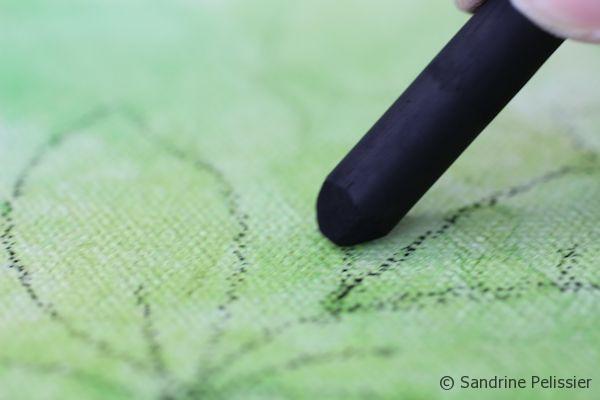
If you like working from an abstract background, the next step is usually to draw outlines of your designs. You can use charcoal for that step if you would like to add a bit of smudging or you can also use Prismacolor Art Stix that won’t smudge. You can draw patterns of your choice, like here I am drawing leaves or try to see shapes in the abstract patterns.
I am a Blick Art Materials affiliate and I receive a small compensation for sales. That does not effect in any way the cost of the purchaser’s order but it helps me keeping the content of this blog free.

 |
Prismacolor Art StixPrismacolor Art Stix are artist-quality woodless colored pencils for every level of expertise. Especially suited for color coverage of large areas, Art Stix offer a bold, smooth laydown of color. |
You might also be interested in my online class : Painting Flowers in mixed media from imagination
Negative painting is also a very efficient method to work more intuitively, here I am painting everything except the space inside my outlines with regular bodied white acrylic paint.
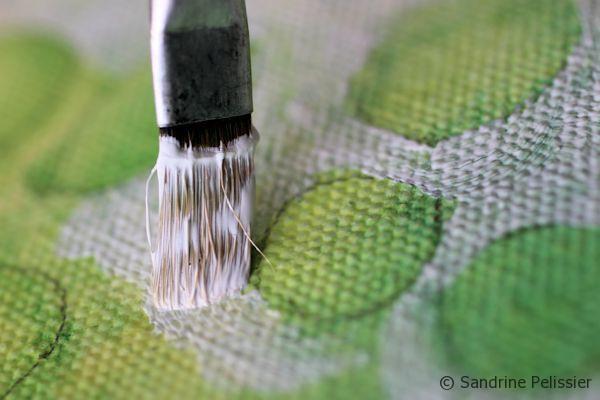
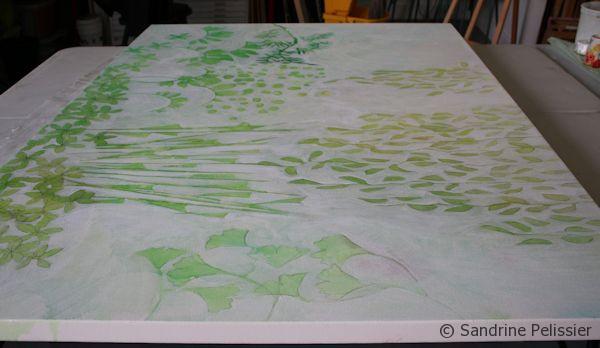
All the negative painting has been done at that stage.
Then I am adding details and patterns with a dipping pen and ink/fluid acrylic.
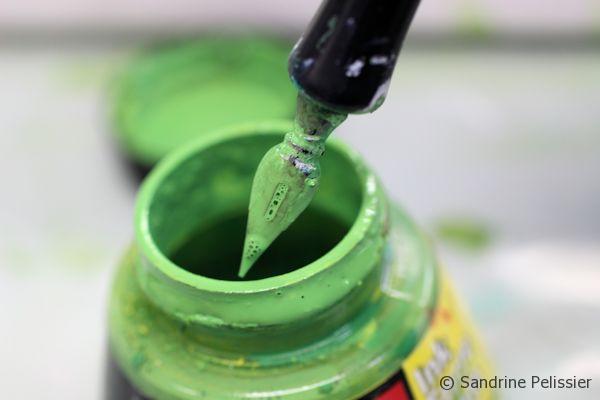
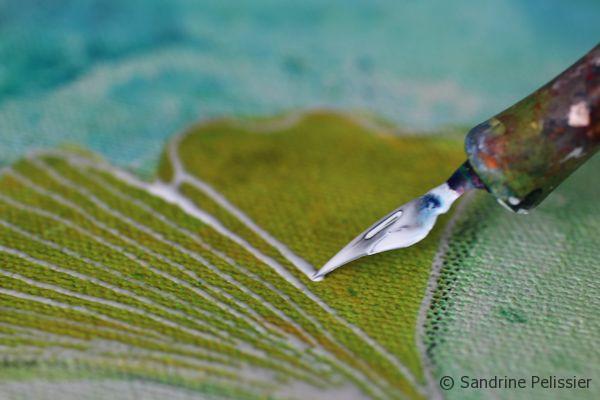
I am a Blick Art Materials affiliate and I receive a small compensation for sales. That does not effect in any way the cost of the purchaser’s order but it helps me keeping the content of this blog free.

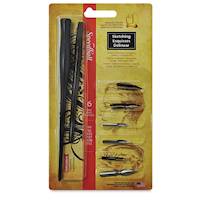 |
Speedball Sketching Project SetThis calligraphy pen and nib set gives you the tools needed to create beautiful works of art. Ideal for drawing, crosshatching, lithography, and fine details. Includes two plastic pen holders and six nibs. |
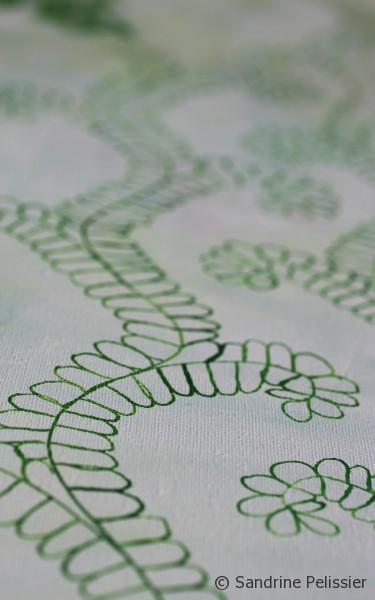
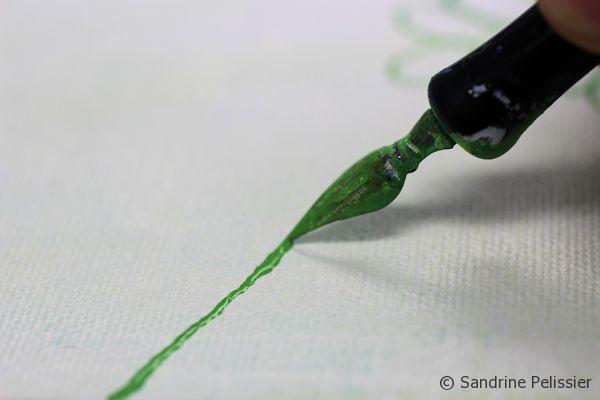
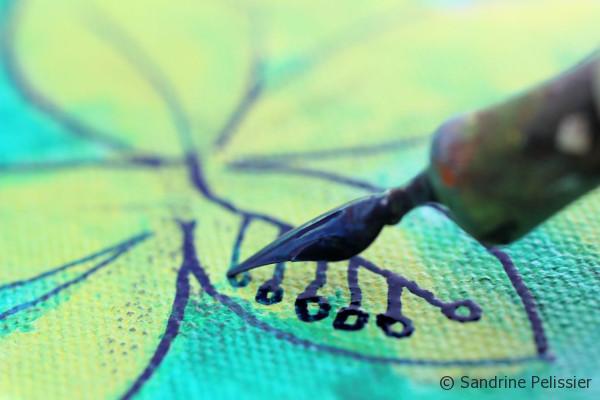
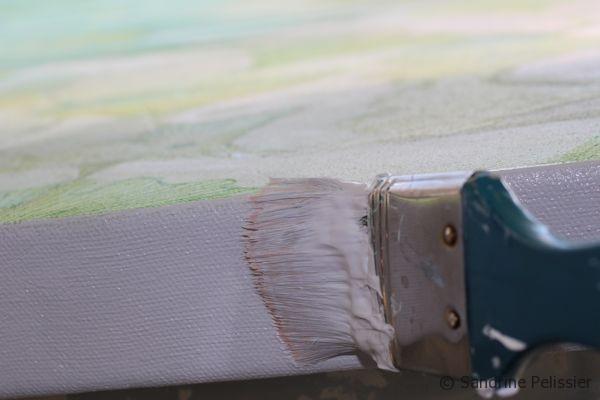
Before varnishing , I cleaned up the sides by painting them white.
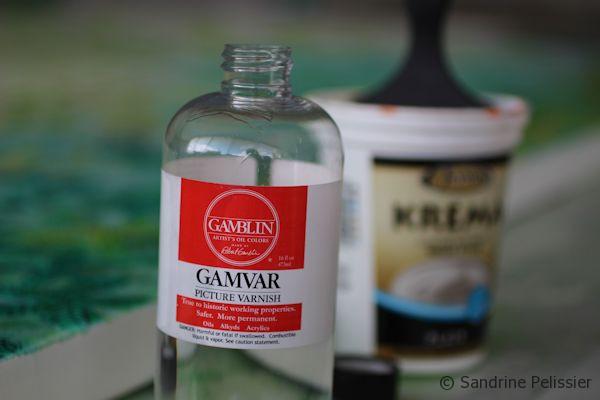
To finish, I used Gamblin, Gamvar Picture varnish which is a very fluid varnish. I like it because I find it less prone to make drips than a thicker varnish.
I am a Blick Art Materials affiliate and I receive a small compensation for sales. That does not effect in any way the cost of the purchaser’s order but it helps me keeping the content of this blog free.

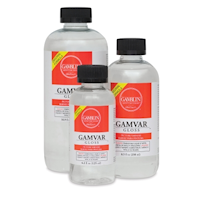 |
Gamblin Gamvar VarnishGamvar is a synthetic resin gloss varnish developed by conservators at the National Gallery. It can be used on acrylic paintings as well as oils. Gamvar is a synthetic resin varnish with a high refractive index similar to that of natural resins.
|
The finished painting in the studio.


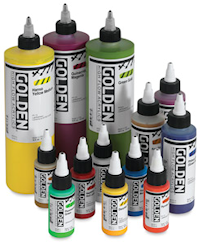
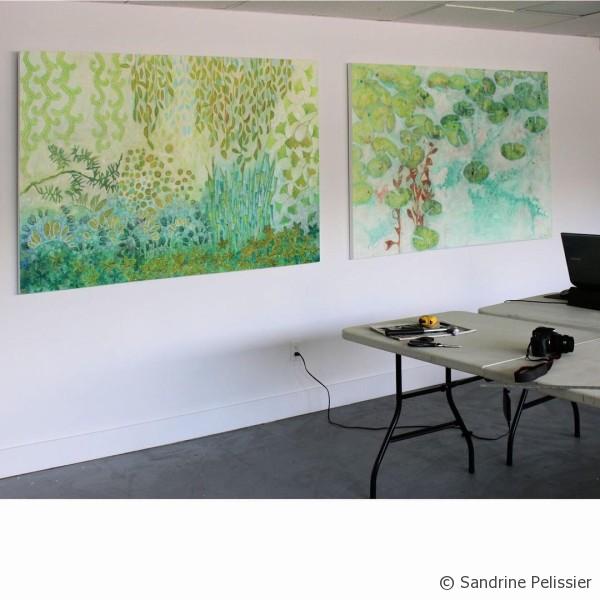
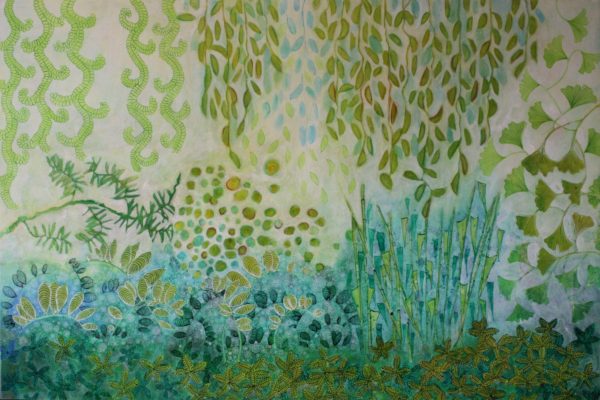


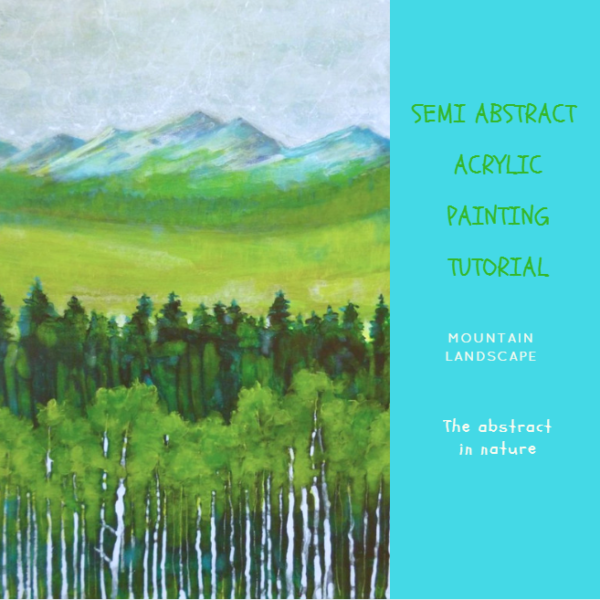
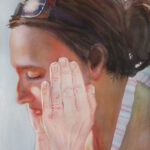
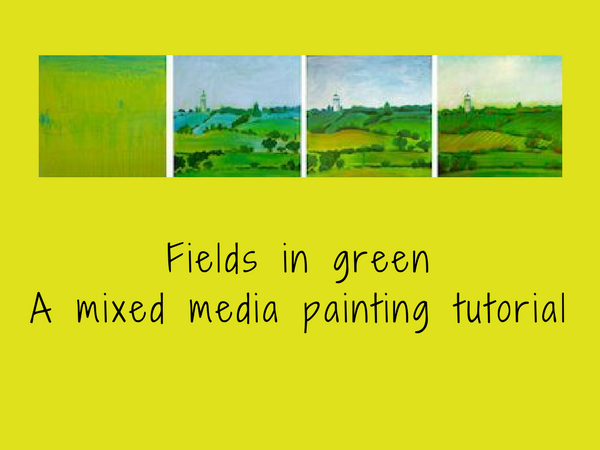
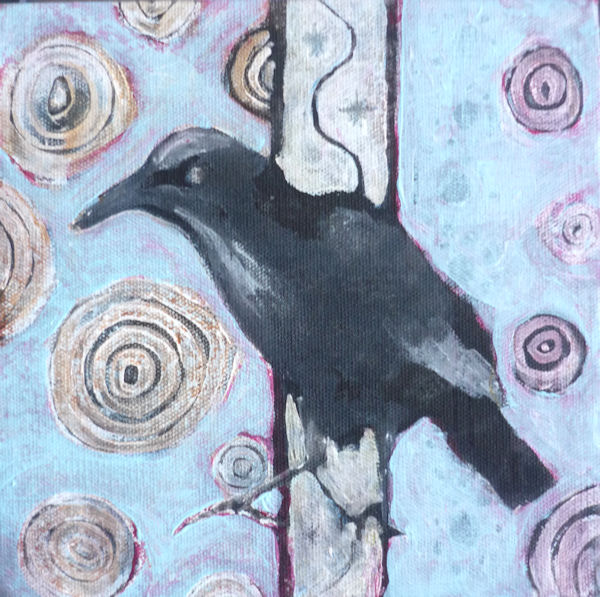
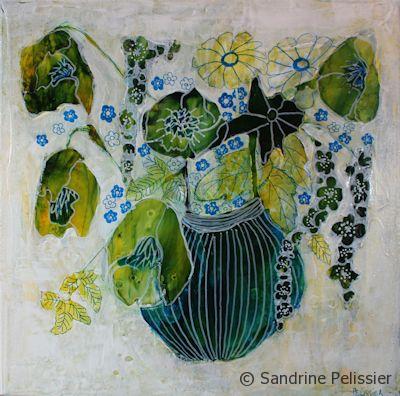
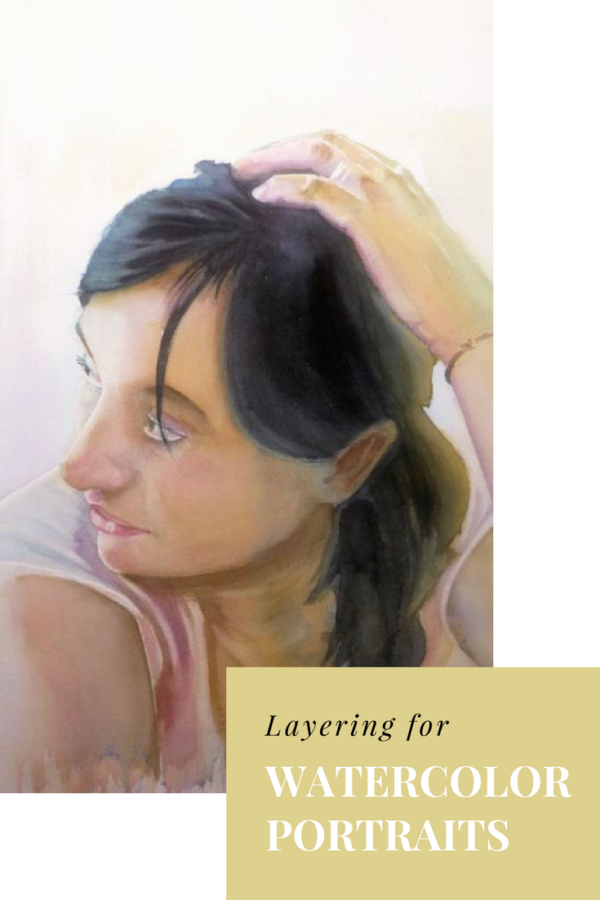
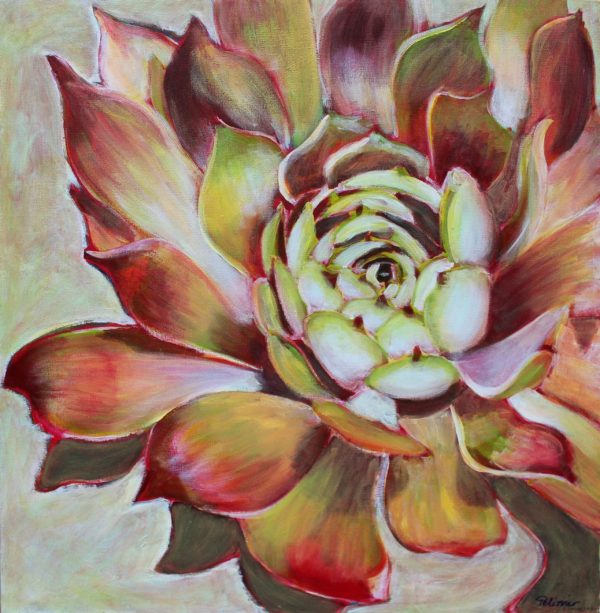
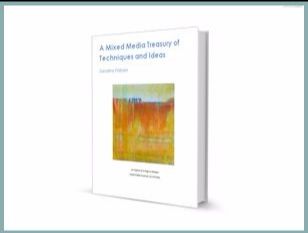

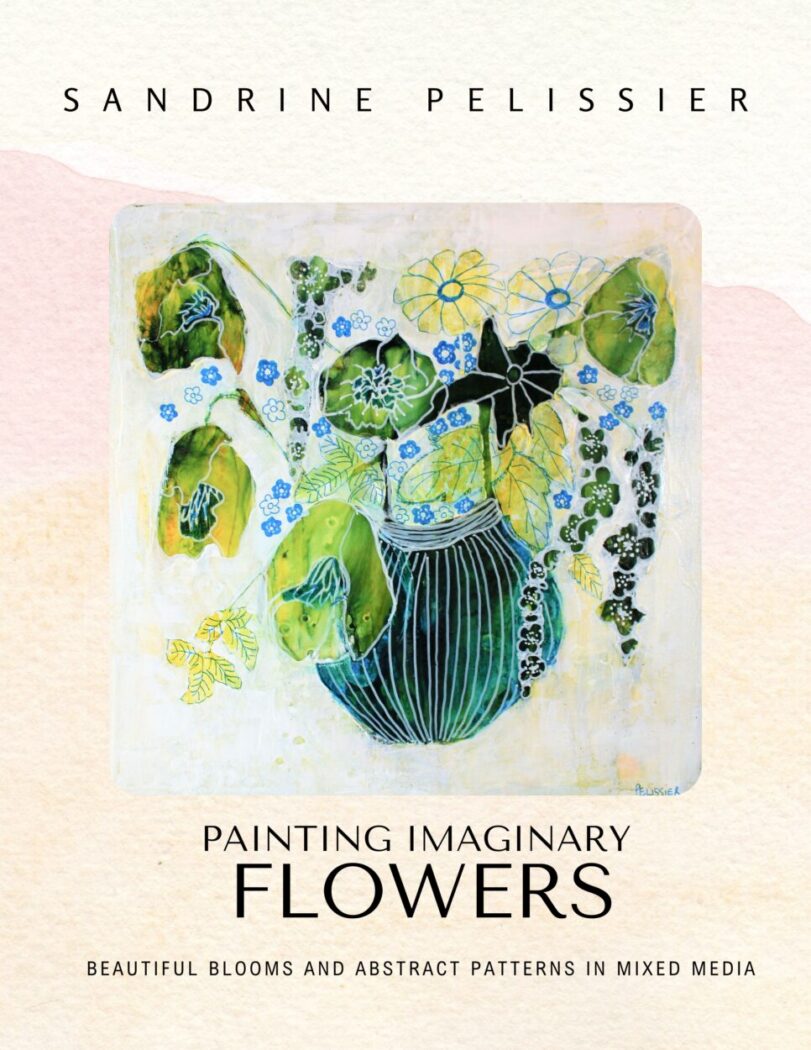
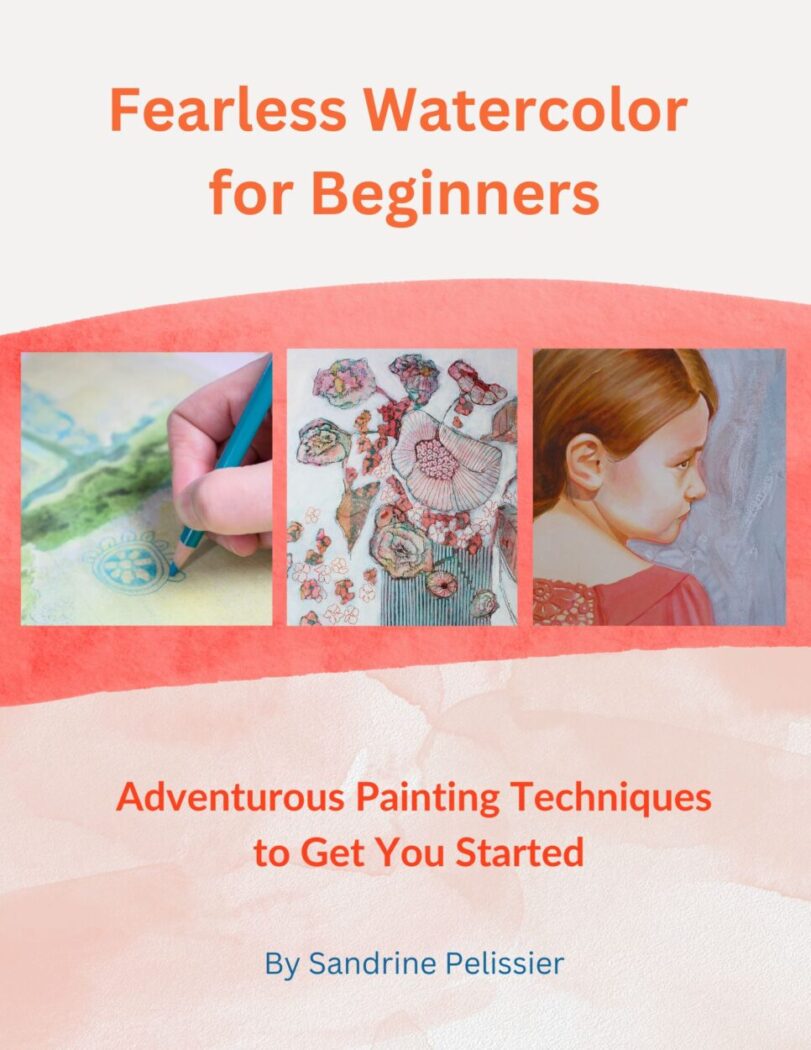

Comments (7)
Suzanne
I have just looked at the students’ work and it is FABULOUS! It is all different and all so original and fantastic that everyone has had the same lesson yet retained their individuality. Wow plus Wow and congratulations to all concerned.
Agilborder
Sandrine,
As an amateur artist, I cannot thank you enough for the time you take creating demos. Your work is amazing and seeing how you paint is so helpful.
I have a question about your process. I continue to be enchanted by how you go about creating your extremely detailed drawings for your watercolor and gouache paintings. Is there a trick( I hope!)? It takes me back to my youth seeing the “paint by numbers” canvasses with all the little shapes that eventually, with color, became a painting. How, on earth, do you accomplish this? Is there a process you might share on how to go about creating these drawings? I.e. How do you boil down all those shapes of foliage and branches to such detailed shapes before you paint? I would love to learn how to do this! Again, thank you so much for all you share!
Sandrine Pelissier
Thanks Agilborder, it is always great to hear positive feedback 🙂
For the little patterns and foliage, I have a few different inspirations. First I often work from one or more reference pictures and I will look at those when I am looking for foliage shapes for example. I also collect pictures that inspire me on Pinterest as well as patterns (it could be fabric, mosaic, wall paper, origami paper) and will at times look at those for inspiration as well. You can see my collection of patterns and zenatngles here: https://www.pinterest.com/paintingdemos/zentangle-and-patterning-inspirations/
Pam Staley
Thank you Sandrine,
I love zentangle and often play with patterns while I relax. The addition of these to your finished work is so beautiful….it adds that mystical quality to your paintings and is quite lovely. I live in redwood country part of the year and just adore how you capture the the feeling of light and deep shadow through an ancient forest. I think the zentangle drawing picks up the reverent feeling I get when I am in such a place.
However, The piece of the process that I struggle with is getting a base detailed drawing down. One of your recent posts on how we don’t draw often anymore hit home with me as I feel that while I like to draw, I struggle with getting enough believable detail to capture foliage. I end up with a muddy mess! I want more focus in some areas and the drawing is key to that. Any demo of that process would be appreciated!
Your Riverbank demo is an example, for me, of what I am curious about. You start with transferring the detailed drawing to watercolor paper. I am looking for assistance in what happens before the transfer…I.e., how to use the reference photos…especially of foliage, and compartmentalize them into believable foliage. My reference to “paint by number” is that your drawings capture each detailed area…a mosaic of carefully crafted tiny shapes, when painted, end up painting up as beautiful foliage. Thanks for sharing your work with us!
Sandrine Pelissier
Thanks Pam for your comment, I really liked you reference to the zentangle and a feeling for reverence, that is something I deeply feel but had not put into words yet.
As for drawing complicated elements in the painting like foliage, it is a very interesting question and I agree it might be a very good subject for a future post, I will think about doing just that. In the meantime, I recently realize that my approach changed when tackling a complex subject like leaves, textures on a trunk or reflections on water. When I painted “On either side of the river” https://paintingdemos.com/painting-trees-and-leaves-on-either-side-of-the-river-watercolor-on-paper/ or “Leaves Lace” https://paintingdemos.com/leaves-lace-painting-a-tree-and-leaves-with-watercolor-a-step-by-step-tutorial/ for example, I had a very literal approach. I mean by that I was trying to draw every detail with as much precision as I could possibly get. Since then I became less interested in being very realistic and I changed my way of drawing. I now look more for patterns, shapes and light. I asked myself questions like “What is the basic shapes of the leaves” “what are the variations” “where are the areas where light and shade are changing” “Are the patterns symmetric or not”… And then I will make my drawing, trying to reproduce the patterns I see on my reference picture, it will have the same feel as the reference picture but it won’t be 100% literal.
Marianne
Just wanted to say thank you for sharing.
Marianne
Sandrine Pelissier
Thanks Marianne, I am glad you enjoyed this post 🙂